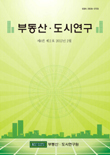- 영문명
- Pragmatic (shilhak) Perspectives of Land in the Chosun Dynasty during the 17th and 18th Centuries
- 발행기관
- 건국대학교 부동산도시연구원
- 저자명
- 신복룡(Bok-Ryong Shin)
- 간행물 정보
- 『부동산 도시연구』제3권 제1호, 5~26쪽, 전체 22쪽
- 주제분류
- 사회과학 > 지역개발
- 파일형태
- 발행일자
- 2010.08.30
5,440원
구매일시로부터 72시간 이내에 다운로드 가능합니다.
이 학술논문 정보는 (주)교보문고와 각 발행기관 사이에 저작물 이용 계약이 체결된 것으로, 교보문고를 통해 제공되고 있습니다.

국문 초록
이 글에서는 조선조의 실학자들의 사상 중에서 그들이 토지를 어떻게 인식했는가를 다루어 보고자 한다. 실학자들의 토지 인식에 주목하는 것은, 그들의 전체 사상을 토지만으로써 설명할 수 있는 것은 아니지만, 토지는 그들의 핵심적 가치 중의 하나였으며, 이 문제에 대한 이해를 통하지 않고서는 실학의 전체상을 이해할 수 없다는 논지에 이 논문은 기초하고 있기 때문이다. 한국과 같은 농경사회에서 토지는 사회경제사뿐만 아니라 정치사의 중요한 추동 요인으로 작용해 왔다. 왕조 변혁에 대한 수많은 명분과 논리에도 불구하고 그 이면에는 늘 누가 토지를 소유하느냐의 문제가 깔려 있었고, 훈구와 개혁파의 논쟁의 이면에도 토지는 중요한 가치였다. 이 글의 문제의식은 다음과 같다. [1] 실학은 조선조의 시대정신을 읽는 하나의 도구였다. 실학자들은 멀리 이이(李珥)의 양민책(養民策)에 머리를 향하고, 전쟁의 참화와 이로 인한 민생의 아픔에 연민을 느끼면서 경기 일원에서 살던 남인(南人) 유파의 몰락한 지식인들(marginal men)이 북학에 영향을 받아 전후 복구와 후생을 유념하면서 구상한 사상 체계였다. 이런 점에서 실학은 한국사에서 근대성(modernity)의 시발이었다. [2] 토지라는 시좌(視座)에 국한하여 본다면, 실학들은 경자유전(耕者有田)의 원칙으로부터 추호도 물러서려 하지 않았다. 농경사회에서 토지는 영혼과 같은 것임을 그들은 잘 알고 있었다. 그들은 조선조의 토지제도인 과전법(科田法)에 따른 사대부의 토지제도의 불합리함을 입증하는 데 노력을 경주했다. 그들의 토지 인식은 기본적으로 사유제를 거부하는 공유제였다. [3] 실학자들이 토지 문제를 둘러싸고 가장 우려한 부분은 토지 겸병에 따른 사대부의 지주화현상이었다. 토지겸병은 경작자의 빈곤을 초래하는 중요한 이유로서 그 자체로도 공의롭지 않았을 뿐만 아니라 국가의 균형 있는 분배를 저애하였다. 그들은 토지 겸병을 막는 방법으로서 토지상한제를 구상했다. [4] 전기 실학자들이 주로 토지제도의 모순과 이를 극복하기 위한 방법으로서의 개혁에 몰두했던 데 비하여 후기 실학자들은 토지 생산성의 증대를 고민했는데, 이는 북학(北學)을 통한 자연과학의 도입과 무관하지 않았다. 그들은 농지의 개발과 농기구의 발명, 그리고 낮은 세율에 유념하였으며, 종래의 미곡납(米穀納)에 대신하여 화폐납(貨幣納)을 주장함으로써 상업자본의 도래를 촉진했다. [5] 실학파들은 역사, 지리, 강역학(彊域學), 토지제도, 과거제도, 천문, 역학(曆學), 의술 등을 광범하게 천착하던 조선조의 백과전서파들이었다. 그러한 그들의 광범위한 학문 영역에도 불구하고 그들이 진실로 강조하고자 했던 본질은 농업생산성을 통한 백성들의 삶의 질의 향상이었다. 그런 점에서 그들은 조선조의 중농주의자들이었다.
영문 초록
[1] Pragmatism (shilhak) is a tool through which the Zeitgeist of the Chosun Dynasty can be reviewed in the modern age. The Korean Pragmatists, heading toward a policy of the cultivation of the people by Lee Yoolgok, were marginalized men of the Southern Party (Namin) who were sympathetic to the misery of the people after the War with Japan (1592-1598) and the War with the Manchurian Ching Dynasty (1627, 1636-1637). These individuals agonized about how to recover from these disasters and were influenced by Yenching science (bookhak or, science from the North). In this respect, the age of shilhak was a period of modernity in Korean history. [2] From the point of view of land, the Korean pragmatists held to the theory that “farmers should have land.” In an agricultural society, they knew, land is a spiritual thing. They tried to prove that the land system in the Chosun Dynasty, which permitted high-level bureaucrats to be granted wide areas land by the royal house, was unreasonable. Their basic tenet was the denial of a private land-ownership system; they believed instead that land should be public property. [3] The pragmatists were seriously concerned that the high-level bureaucrats would become landlords through a latifundium system. A latifundium system could not be justified as it was a cause of mass poverty and kept the country from achieving a balanced distribution of wealth. The Pragmatists searched for a way to limit the ceiling of land ownership. [4] The pragmatists of the former age in the 17th century devoted themselves to the eradication and reformation of the conflicts in the land system. In comparison, the pragmatists of the latter age in the 18th century were interested in the promotion of land productivity that was brought about as a result of the introduction of natural science from the Yenching science. They remained conscious of the need to invent agricultural tools, develop farm land and ease the tax system. They also contributed to the introduction of commercial capital by promoting taxation in hard currency instead of a crop tax system. [5] Korean pragmatists were a kind of Encyclopaedists, who studied history, geography, territorial problems, the land system, the examination of civil service, astronomy, the calendar and medicine. In spite of their broad interests in the sciences, what they really wanted was to better the life of the people through the growth of agricultural productivity. In this point, they were essentially the physiocrats of Korean history.
목차
1. 서 론
2. 실학의 발생사적 배경
3. 누가 토지를 가져야 하는가?: 겸병(兼倂)의 금지를 위한 고민
4. 후기 실학자들의 고민 : 토지 생산성의 증대
5. 결 론
키워드
해당간행물 수록 논문
참고문헌
관련논문
사회과학 > 지역개발분야 NEW
- 청년층 재고용에 공공고용서비스 정책이 미치는 영향
- 아웃소싱, 기업 간 불균등한 이익배분과 임금불평등: 아웃소싱이 어떻게 임금불평등을 초래하는가?
- 인공지능 기반 문서처리 서비스 플랫폼의 설계 및 구현
최근 이용한 논문
교보eBook 첫 방문을 환영 합니다!

신규가입 혜택 지급이 완료 되었습니다.
바로 사용 가능한 교보e캐시 1,000원 (유효기간 7일)
지금 바로 교보eBook의 다양한 콘텐츠를 이용해 보세요!




